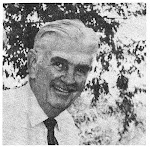Holling Clancy Holling
wrote Paddle-to-the-Sea at least two
decades too soon. While he was an
outstanding artist, storyteller, and educator, he wrote this book in 1941. The insect-killing properties of DDT had been
discovered only two years earlier. The
world was embroiled in a war that concentrated all efforts on industrialization
— not nature. We as Americans seemed to
simply accept nature as being unchanging
and immutable.
It would be 1962 before
Rachel Carson wrote Silent Spring
with its clear warning of a looming ecological disaster. It would be another year before Stewart Udall wrote The Quiet Crisis, warning,
as Richard Telford reports, that “we live in a land of vanishing beauty, of
increasing ugliness, of shrinking open space, and of an overall environment
that is diminished daily by pollution and noise and blight.”
I
just ran across Richard Telford's well-written commentary on Paddle-to-the-Sea and the environmental
questions we now have: “The Things We Carry: Revisiting Holling Clancy
Holling’s Paddle-to-the-Sea” (online at http://theecotoneexchange.com/2014/10/20/the-things-we-carry-revisiting-holling-clancy-hollings-paddle-to-the-sea/). His comments bear reading and considering why
this book from 1941 still resonates among readers of all ages. We wonder what the carved canoe’s adventures
might have involved if there had been pollution for it to contend with. Would Minn have recognized its Mississippi
home where aquatic life is dying?
Telford
writes graphically in the Ecotone Exchange blog about Holling’s description of the Nipigon country, “All this time the world was
changing. The air grew warmer, the birch
twigs swelled with new buds. A moose
pawed the snow beside a log, uncovering green moss and arbutus like tiny stars.
And then, one morning, the gray clouds
drifted from the sky. The sun burst out
warm and bright above the hills, and under its glare the snow blankets drooped
on the fir trees.”
One reason parents of home-schooled children often turn
to Holling’s works is for their depiction of nature, which is disappearing from
the children’s lives. Indeed, nature
seems to be disappearing to a greater or lesser degree from all of our lives. What would Holling have written about sites
requiring environmental cleanup, about waterways covered with a sheen of oil,
about forests in a parched land threatened by fire?









Thankss for sharing for more Social Jackpot
ReplyDelete